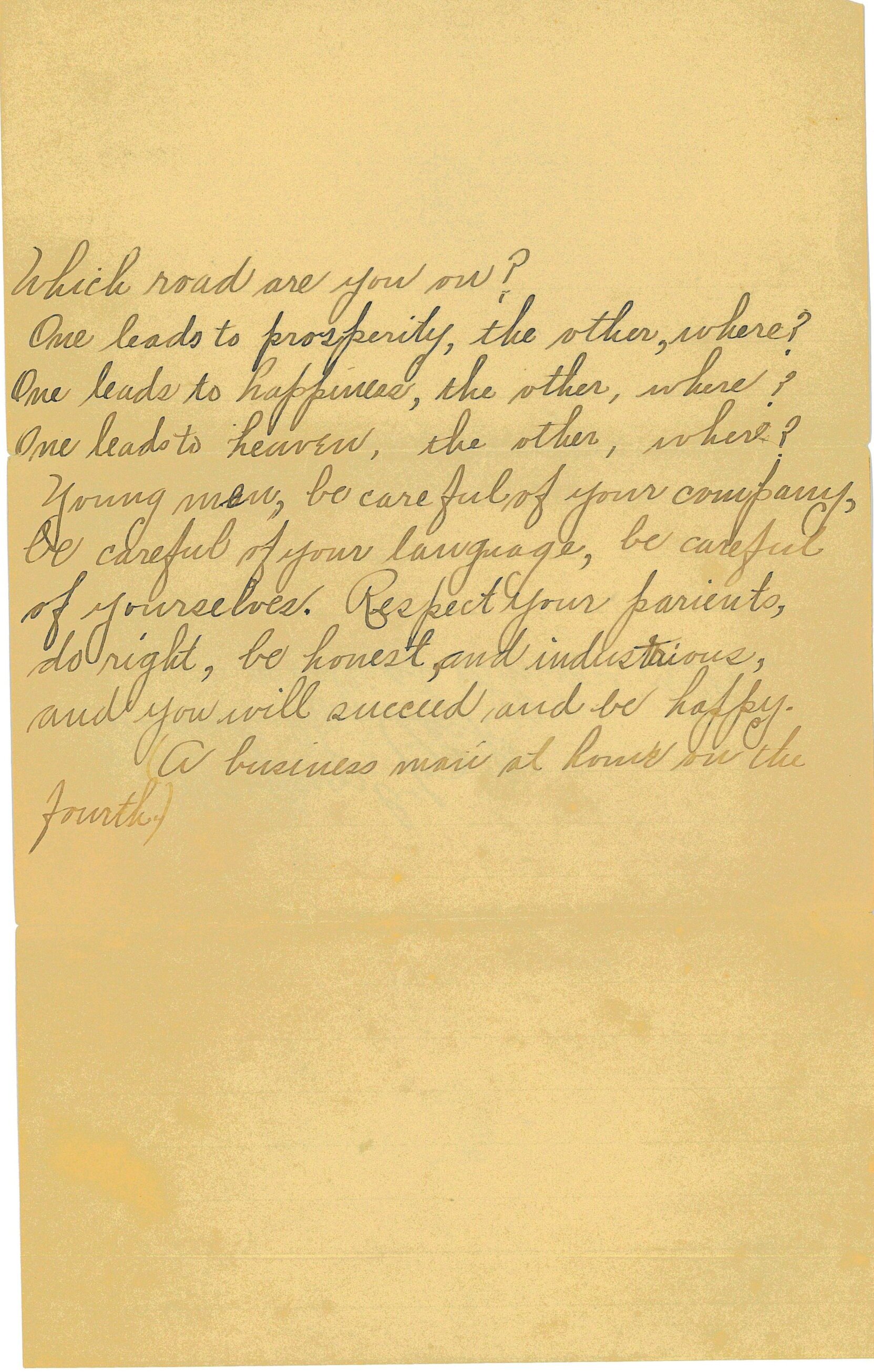A Remembrance of Fourth of July by Frank Peck
/Frank Peck in orchard at Peck Homestead, Peck_Mertz Collection.
Frank Peck writes of growing up in Babcock’s Grove and of the people he remembers from his boyhood. One story he shared was of Fourth of July and how Watson Kenyon, a blacksmith, started the day with a bang. Watson took two anvils, put some black powder between them, and then lit a fuse that ignited the powder. Frank claimed the ensuing explosion could be heard for miles across the fields and prairies.
Frank Peck Journals courtesy of Peck Family Descendants, Click to Enlarge.
Year: 1850; Census Place: York, DuPage, Illinois; Roll: 105; Page: 73A. Click to Enlarge.
Who was Watson Kenyon you may ask? After a little research, it turns out that his name was actually George Washington Kenyon, sometimes referred to as Washington Kenyon. He was born November 13, 1828, in Barker, Broome County, New York to Reynolds Kenyon and Annis Strickland Kenyon. Official records, such as the census, vary between the spelling of his last name as Kenyon and Kinyon.
George’s father was a farmer in York Township and George worked as a laborer on that farm. On March 17, 1858, George married Mary Kernan in DuPage County. The young couple settled in Babcock’s Grove where George worked as a blacksmith. On July 29, 1862, George enlisted in the 105th Illinois Infantry, Company F as a musician. When he died in 1897, his obituary stated that George was an accomplished fifer and as a member of the Grand Army of the Republic (a fraternal organization for Union veterans of the Civil War), he would play marching tunes for his fellow veterans.
Bird's eye sketch of Osceola, shows its Iowa and Indiana roots with streets named "Hawkeye" and "Hoosier," 1880/ University of Nebraska-Lincoln.
George’s enlistment papers describe him as 34 years old, married, working as a blacksmith, and having sandy colored hair with gray eyes. His younger brothers, Henry and Paris, also enlisted in the 105th Illinois Infantry but in different companies. Of the three brothers, George and Henry returned home to Illinois but Paris was killed in a battle near Marietta, Georgia, and is buried in the Marietta National Cemetery.
The 1870 census finds George, his wife Mary, and three children in Lombard, Illinois. The next year, George and his family moved to Polk County, Nebraska near the town of Osceola where he homesteaded a soldier’s claim to almost 200 acres of land.
The original Nebraska Soldiers’ and Sailors’ Home was built in Grand Island in 1887. (Photo courtesy of Nancy Klimek, Grand Island Veterans Home)
In 1872, he opened a blacksmith shop on his farm, which was noted for being only the second such shop in the county. By 1880, the census shows that George and his family were living in Osceola, Nebraska where he was working as a blacksmith. George Washington Kenyon died on January 11, 1897, at the Soldier’s Home in Grand Island, Nebraska after several years of battling cancer.
He was well known in the Osceola area, described as an honest, upright man who was an early Polk County pioneer. His farm and blacksmith shop was located on a road that was the main thoroughfare for farmers traveling back and forth from the market and was known for the “Wayside Well” at which travelers could slake their thirst.
Although Frank Peck didn’t date his tale, his recollection of that Fourth of July certainly invokes the images of life in a small settlement on the prairie. After all, could you imagine waking up to the noise of two anvils, which are large blocks of metal, being exploded? It was vivid enough for Frank to remember approximately sixty years later.
Fourth of July on Main Street, date unknown.
Written by Jean Crockett, Archivist for the Lombard Historical Society.









